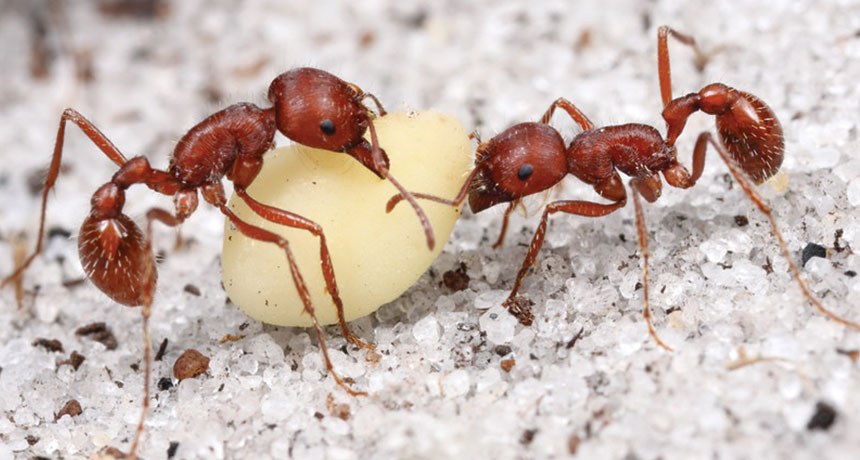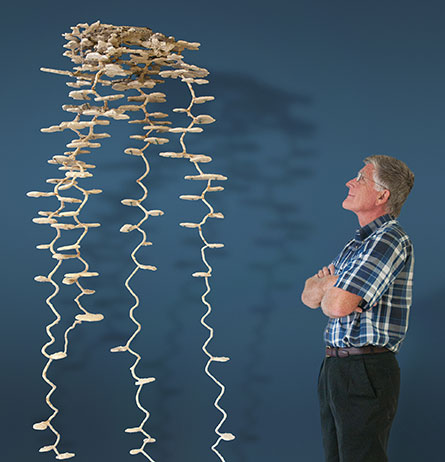Harvester ants are restless, enigmatic architects
Why do Florida harvester ants dig complex, curly nests again and again?

HOARDERS Harvester ants gather thousands and thousands of seeds to store underground for future meals.
Alex Wild
Florida harvester ants “make a nest that is truly beautiful in its architecture,” says Walter Tschinkel. He has poured molten metal or plaster into the underground nests and dug up the hardened casts to reveal their multilevel shapes. Much about these ant nests, however, defies explanation.
For reasons still unknown, colonies of Florida harvester ants (Pogonomyrmex badius) abandon their lovely nests about once a year and dig a new one. At a study site Tschinkel calls Ant Heaven, the colonies typically move about two to six meters away from their old homes.
He and his students at Florida State University in Tallahassee have found no pattern to the shifts: no tendency to escape tree shade or seek more of it, or to edge away from big neighbor colonies. And the new nests look like the old ones: a tight cluster of interconnected, cookie-shaped chambers that dangle more chambers below on spiraling tendrils of tunnels.

Ants excavate a new nest in “an amazingly fast process,” Tschinkel says. “They just bring soil up — hundreds of workers going all day.” A colony, typically about 4,000 ants, can dig and move into a new nest in four to seven days.
During a move, ants bustle back and forth along a well-worn path between the old nest and the new. Workers carry their queen, hundreds of larvae and young ants, plus seeds they’ve collected and stored for food. “They even move their charcoal,” Tschinkel says. And that’s another puzzle.
These ants scatter scorched pine needle tips and other charcoal around nest openings, some 77,000 pieces for a big colony. Tschinkel and students have tested more than half a dozen notions about the charcoal’s possible benefits, but found nothing convincing. (Deterring intruding ants? No. Retaining water after rain, like mulch? No. Warming the nest? A very little bit.)
Charcoal ranks as a minor enigma compared with what Tschinkel called the “charming, central mystery” in an October overview in the Journal of Bioeconomics. Ants share behavioral rules, but their queen has babies, not a blueprint. “Everything they accomplish, they accomplish without a leader… without a plan, without prior instruction, and in the case of subterranean ant nests, in the dark.”
TAKING SHAPE Researcher Walter Tschinkel uses molten metal to make casts of intricate harvester ant nests.Nature Documentaries |






